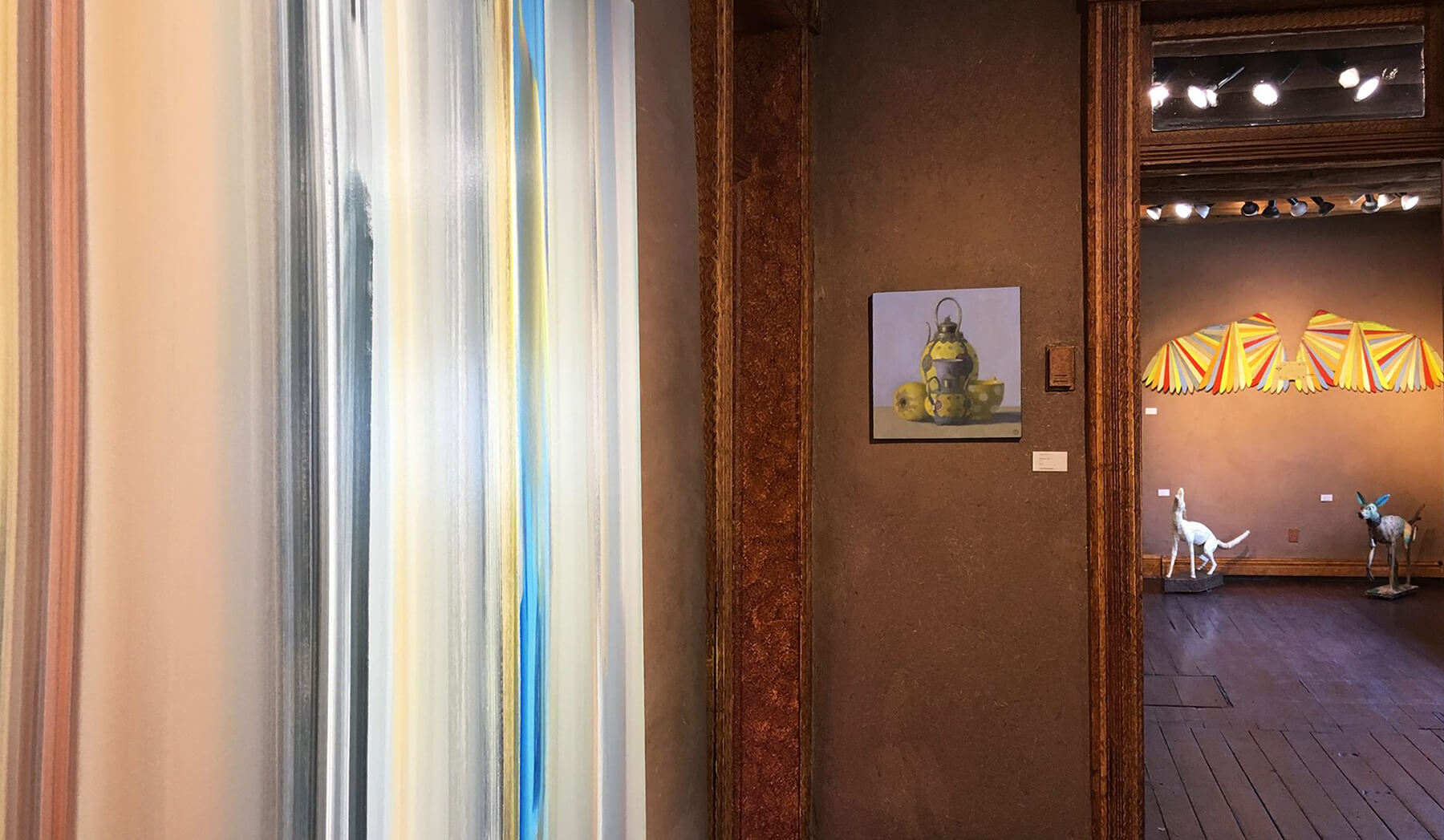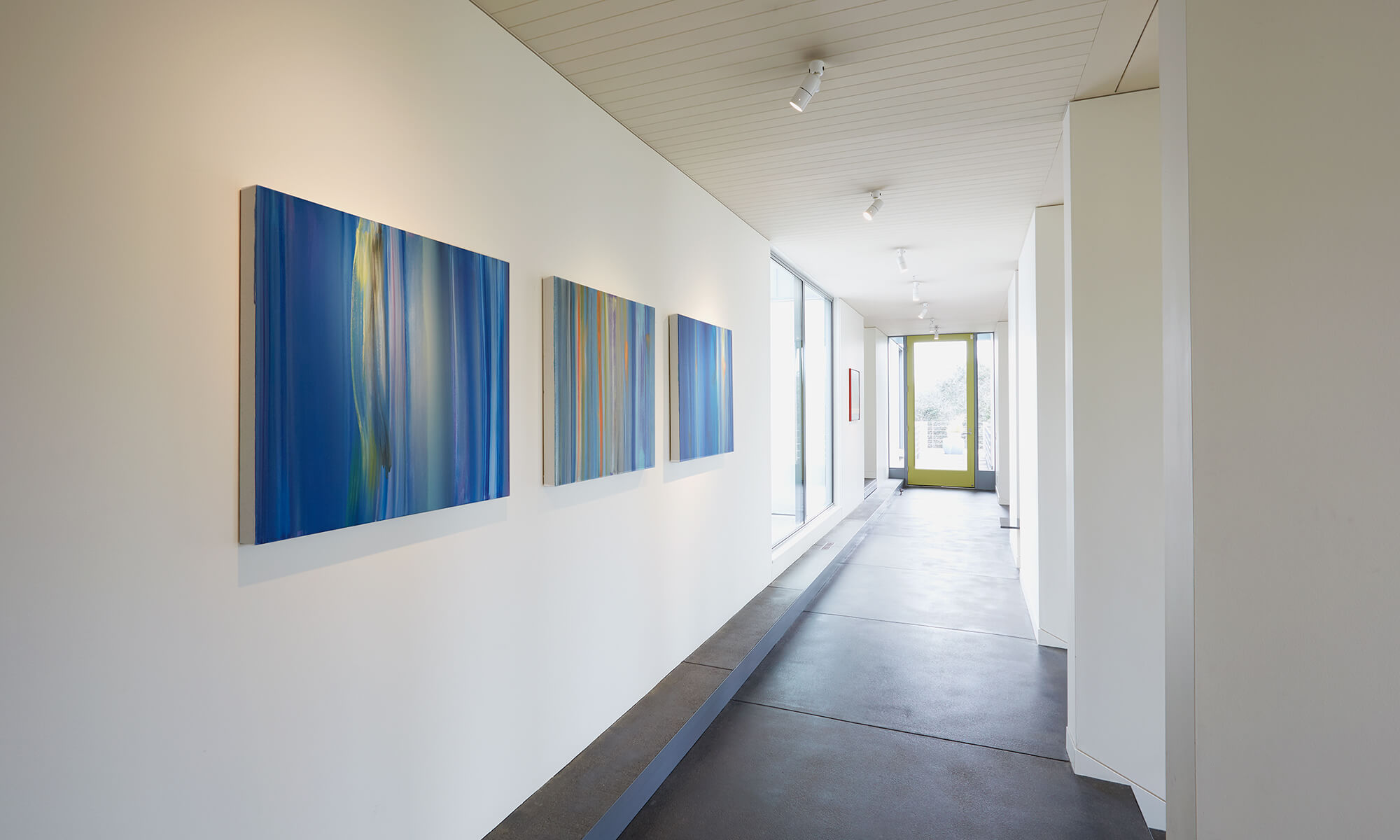“Uncovering Santa Fe’s Vibrant Visual Arts”. Santa Fe visual arts Video shot by Bill Stengel, featuring artists based in Santa Fe, New Mexico – Willy Bo Richardson, Cara Romero and others.
“The City Different”
Santa Fe Visual Arts – A Brief History of Art

Pueblo Clay, America’s First Pottery
Native American Pueblo pottery found inception thousands of years ago as ceremonial and utilitarian vessels. Marks made on pottery are not unlike ancient wall paintings that have long outlasted their creators. This language of symbols derives power from the view that all things, living or inanimate, posses archetypal qualities. Animal symbols and elements of nature hold importance for human life and existence. Hatching and geometric lines that may appear to be solely decoration often represent abstract ideas communicated through symbols.
For reasons not completely known, the Hohokam, Mogollon, Anasazi, and Salado cultures all dispersed by the 1500s. Some say it was drought… What ever the cause, large communities disintegrated as cohesive, recognizable cultural units and moved southward to the valley of the Rio Grande. Here the natives had their first encounters with Spanish invaders.
Hohokam pottery was made from local clays combined with temper (sand, crushed rock, or mica) to improve the strength of the clay and to prevent it from cracking during firing. Formed by the paddle-and-anvil technique, pottery included jars, bowls, pitchers, scoops, and plates, in sizes that ranged from miniatures to large jars. Pottery was generally of three types: plain buff, red-on-buff decorated ware, and plain red burnished ware.
Although Mogollon pottery is quite similar to early Hohokam pottery, Mogollon ware was produced by the coil-and-scrape technique. Bowls were often decorated with surface texture on the exterior. By the 1300s, zoomorphic and anthropomorphic effigies appeared.
The Anasazi produced great quantities and vast varieties of pottery styles, colors and pottery types.
Spanish Origins & Colonial Mexican School
The first artworks from the hands of European artists were Christian paintings and sculptures of Spanish origin. The first Franciscan missionaries came into New Mexico territories with the Onate expedition in 1598. Santa Fe was founded in 1609 and by 1630 some twenty five missions had been established in New Mexico.
An other group of artists was mainly men of Spanish lineage born in Mexico City & Puebla, Mexico. TThe artists of the Mexican colonial school were highly trained and worked as apprentices under a master artist. Established in the early 1600s, the work of these artists made their way into churches in Santa Fe and the Southwest.
The Atchison, Topeka and Santa Fe Railway
The Atchison, Topeka and Santa Fe (ATSF), helped to nurture and sustain the Taos and Santa Fe art colonies. The railway provided transportation in exchange for paintings and used the paintings on calendars, brochures, menus, and train folders. ATSF purchased several hundred paintings from artists residing in Taos and Santa Fe, and helped establish northern New Mexico as an internationally recognized cultural center.
The completion of the ATSF line to California took place in the late 1880s. Color photography was still unknown, so paintings ruled as visual representations of the scenic wonders of the West. The ATSF, Denver and Rio Grande, Great Northern, Northern Pacific, and Southern Pacific railroads brought artists to the West to paint its grandeur and to promote their routes. In the 1890s such leading popular painters as Thomas Moran, Henry Farney, Fernande H. Lungren, and Maynard Dixon toured the company’s lines in New Mexico, Arizona, and California seeking subjects for use by the railway.
Western enthusiasts, such as Charles F. Lummis, also urged American artists to paint the West with the idea that it would soon change. The completion of the Transcontinental Railroad system also created a livelihood for native people who brought their pottery and crafts to the railroad stations to sell to travelers and tourists. A Victorian Era belief that Native Americans were a “vanishing race,” acted as additional incentive to buy their work as collectables.
Canyon Road and the Santa Fe Art Colony
Professional artists visited Santa Fe on painting excursions since the 1880s. The region’s natural scenic beauty was a major draw. Also, Native Pueblo cultures, and old Spanish villages provided subject matter for painting and sculpture. By the early 1900s, Santa Fe’s growing reputation among east coast artists brought two friends from New York, John Sloan and Randall Davey. They carried a letter of introduction from their friend and mentor Robert Henri. Sloan spent more than 30 summers in Santa Fe, living and painting in a studio on 314 Garcia Street in the Canyon Road neighborhood. Artists like Henri, Sloan, and Davey had permanently established Santa Fe visual arts reputation as important. Other artists soon settled on Canyon road to join them.
Women Artists of Santa Fe
Women have been integral to the Santa Fe art scene since Olive Rush first visited in 1914. Into the early 1960s, women artists had a significant presence, not only through the visual arts, but also in literature. For example, Willa Cather first visited Santa Fe in 1915, Alice Corbin Henderson moved there in 1916, and Mary Austin first visited in 1918, moving to Santa Fe in 1924. Interestingly, while Modernist tendencies of the Santa Fe Art Colony were active on several levels, women artists were bolder and more avant-garde than their male counterparts.
Video can also be found on the blog Art Lovers Guide To Santa Fe.

One Reply to “Santa Fe’s Vibrant Visual Arts: Visit Santa Fe”